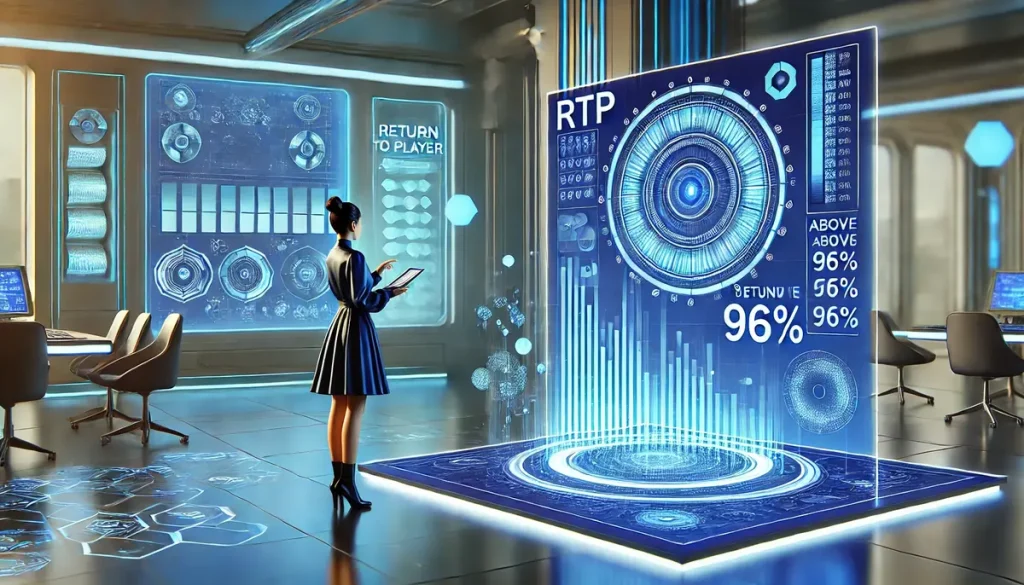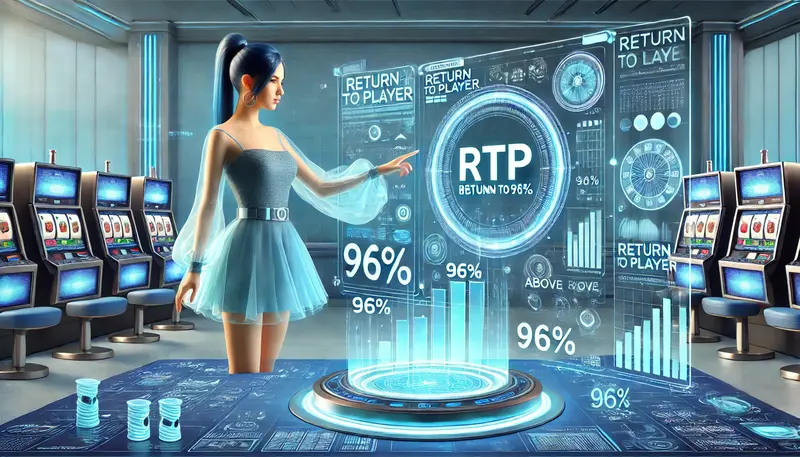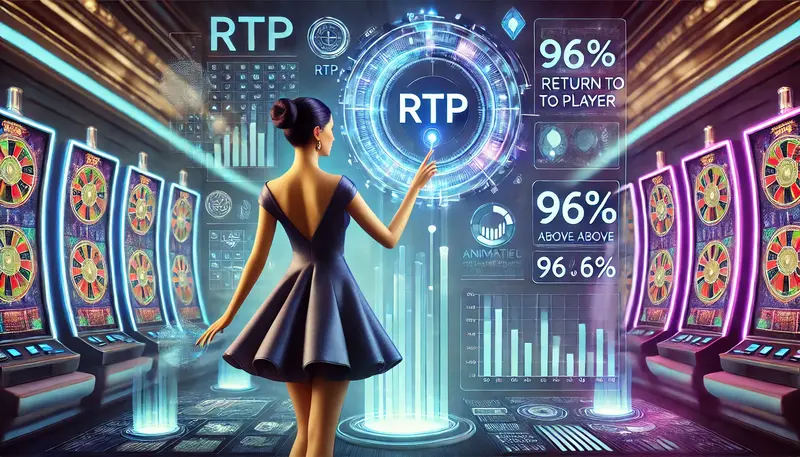Welcome to Dolphins! If you’re delving into the world of online casinos, one of the first terms you’re likely to encounter is “what is RTP”.
Memahami konsep ini sangat penting bagi siapa pun yang ingin membuat keputusan yang tepat saat menikmati permainan slot atau penawaran kasino lainnya. Mari kita uraikan dan jelajahi makna RTP dan signifikansinya.
RTP Definition
What is RTP?

RTP, or Return to Player, is the expected percentage of wagers a game returns to players over time. This number is based on extensive testing, often using millions of simulated spins, to reflect a game’s long-term payout behavior.
While RTP helps players understand potential returns, it’s not just about the game mechanics.
Insights from PUSAT4D GAMES emphasize that where you play also matters. Platforms with updated RTP data, secure systems, and optimized gameplay can affect real outcomes.
For example, a slot with 95% RTP means that, on average, $95 is paid back for every $100 wagered. But this is a long-term average, not a short-term guarantee.
Actual results vary, some players win big, others may lose more, depending on luck and volatility.
Breaking Down RTP Further
When it comes to slot games, Return to Player (RTP) is often highlighted as a key metric. But what does it really tell us?
To get a clearer picture, let’s break down what RTP means beyond the surface and why understanding its deeper layers can shape how we approach the game.
- Theoretical Nature: RTP is not a guarantee for short-term play. It represents a long-term average, and actual results can vary greatly over shorter gaming sessions.
For example, in 100 spins, a player might win $500 or lose everything, regardless of the game’s RTP.
- House Edge: RTP indirectly reflects the house edge, which is the casino’s built-in advantage.
For a game with a 95% RTP, the house edge is 5%. This means that over time, the casino expects to retain 5% of all wagers placed on the game.
- Variance and Volatility: While RTP provides a general indication of a game’s payout potential, it does not account for volatility or variance.
High volatility games might have fewer, but larger payouts, whereas low volatility games typically offer smaller, more frequent wins.
Both types of games can have the same RTP but deliver vastly different gaming experiences.
In the end, RTP is just one piece of the puzzle. It offers insight into the long-term math, but not the full story. To play smarter, it’s crucial to consider variance, volatility, and the house edge, because that’s where the real game begins.
Why RTP Matters to Players

Understanding the RTP meaning helps players make smarter decisions when choosing which games to play. Here’s why it’s important:
- Game Selection: Higher RTP games tend to offer better value for players who prioritize long-term returns. For instance, a game with an RTP of 98% is generally more favorable than one with an RTP of 90%.
- Expectation Management: Knowing the RTP can set realistic expectations for your gaming session. Players can better understand the trade-offs between risk and reward.
- Bankroll Management: By considering RTP, players can estimate how much of their bankroll might last over time, aiding in better budgeting for their gaming experience.
At the end of the day, grasping the RTP meaning empowers players to make smarter moves. From managing your bankroll to picking games with better odds, that small percentage carries big weight when it comes to long-term casino strategy.
Learn more: Why RTP Matters: How It Affects Your Casino Strategy
Example of RTP in Action

To truly grasp the RTP meaning, it helps to see it in action. Let’s break down two simple examples that highlight how RTP directly impacts your potential returns and why paying attention to it matters.
- Game A: RTP = 96%
Over $1,000 wagered, the theoretical return to players is $960, with a house edge of $40. - Game B: RTP = 88%
Over the same $1,000 wagered, the theoretical return to players is $880, with a house edge of $120.
Clearly, Game A provides a better long-term value than Game B, even though the immediate outcomes might still vary.
RTP is a vital tool for players aiming to make informed decisions in casino gaming.
By understanding its theoretical nature, relation to house edge, and limitations in short-term play, players can better assess which games align with their goals and preferences.
While RTP isn’t the sole determinant of success, combining this knowledge with a good understanding of game mechanics and variance can enhance both enjoyment and strategy in the gaming experience.
How to Find the RTP of a Game

Finding the RTP meaning for a particular game is straightforward. Most reputable casinos and game developers make this information easily accessible. Here’s where to look:
- Game Information Pages: Many online casino games include RTP details in their descriptions or help sections.
- Casino Reviews: Comprehensive reviews often highlight the RTP percentages of popular games.
- Developer Websites: Providers like NetEnt and Microgaming frequently disclose RTP values for their games.
Understanding RTP starts by finding the numbers, check the game’s info page or developer’s site for a quick edge before your next bet.
For example, PUSAT4D GAMES, features high-RTP slots with real chances to win. It’s one of the few platforms that handpicks games based on performance, not just popularity. That means better odds and smarter play for every spin.
With top providers like Pragmatic Play, PGSoft, JILI, and 5G Gaming in the lineup, quality is never in question. Each game is selected for its fairness, excitement, and win potential. At PUSAT4D, you’re not just playing, you’re playing to win.
Learnmore: How to Check RTP on Slots: Maximize Wins or Avoid Losses
Factors That Affect RTP Outcomes

The RTP meaning gives you a solid foundation, but it doesn’t tell the whole story.
To fully understand your odds, you need to look beyond the percentage and factor in a few key elements that can significantly impact your gameplay.
Here’s what else to consider:
- Volatility: High volatility games may pay out large sums infrequently, while low volatility games offer smaller, more frequent wins.
- Bonus Features: Some games include bonuses that can temporarily alter the RTP.
- Player Strategy: For certain games, like blackjack, employing a strategy can help you maximize the RTP.
In the bigger picture, RTP is one part of a more complex equation. By recognizing how volatility, bonus features, and strategy influence outcomes, you’re not just spinning the reels, you’re playing with insight.
Tips for Choosing High RTP Games

Understanding the RTP meaning is only the beginning. To truly benefit from it, you need to apply that knowledge where it counts.
Here’s what you should keep in mind when choosing high RTP games:
- Focus on High RTP Games: Look for games with RTP percentages of 96% or higher for better long-term returns.
- Play Free Versions: Test games in demo mode to understand their mechanics and features before wagering real money.
- Leverage Bonuses: Take advantage of casino promotions like free spins or matched deposits to extend your playtime.
- Balance Volatility and RTP: Choose games that match your risk tolerance and gaming preferences.
By learning how to pick games based on the RTP meaning, you’re setting yourself up for smarter gameplay, better bankroll management, and a more rewarding casino experience overall.
You might also like: Top 10 Highest RTP Slots for Big Wins in 2025!
Conclusion
Understanding what is RTP and the RTP meaning can empower you to make better choices in your casino gaming journey.
While RTP offers valuable insights into a game’s payout potential, it’s essential to remember that results are ultimately driven by chance.
By combining this knowledge with a clear strategy and responsible gaming habits, you can enhance both your enjoyment and your chances of success.
Choose wisely, play smart, and may your next spin bring you luck!